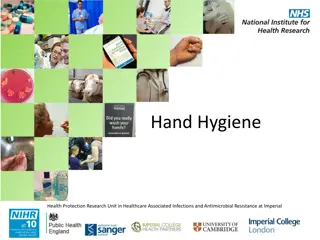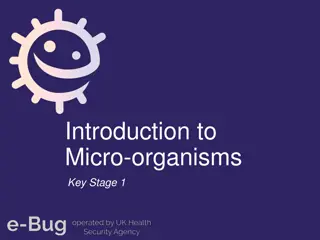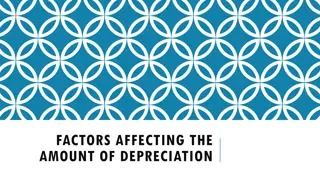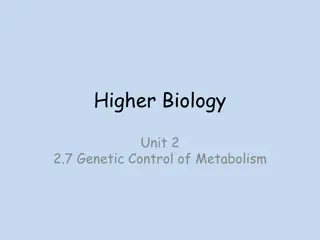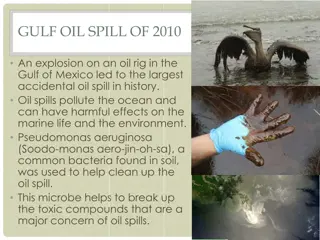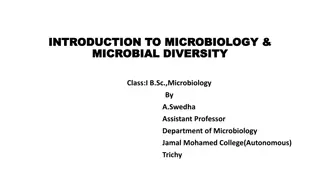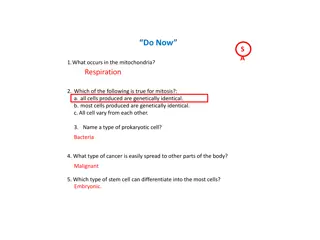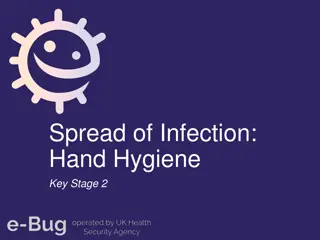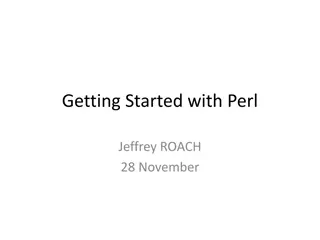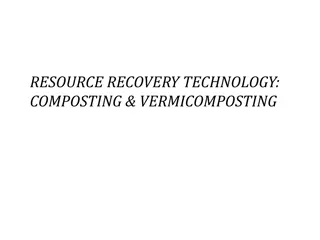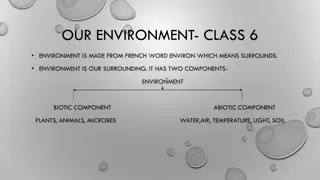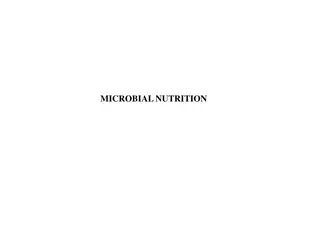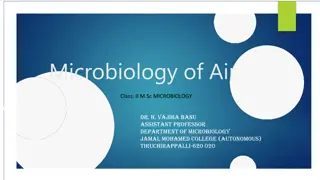Understanding Useful Microbes: Key Information for Students
Explore the world of useful microbes, learning how they benefit us in areas such as health, food production, and waste recycling. Discover how microbes like bacteria and fungi play essential roles in various processes, from antibiotic production to fermentation. Engage in activities to deepen your understanding of microbial applications in everyday life.
Download Presentation

Please find below an Image/Link to download the presentation.
The content on the website is provided AS IS for your information and personal use only. It may not be sold, licensed, or shared on other websites without obtaining consent from the author. Download presentation by click this link. If you encounter any issues during the download, it is possible that the publisher has removed the file from their server.
E N D
Presentation Transcript
Micro-organisms: Useful Microbes Key Stage 4
Learning Outcomes All students will: Understand that some microbes can keep us healthy. Understand that some microbes can be useful. Understand that we need bacterial colonisation to live a healthy life. Understand that we need to protect our normal microbial flora. Begin to explore scientific research. Most students will: Understand that microbes are important in decomposition and nutrient recycling. e-Bug.eu
Curriculum Links PHSE/RHSE Health and prevention Science Scientific thinking Analysis and evaluation Experimental skills and strategies Genetic engineering Role in biotechnology Biology Development of medicines Cells Health and disease English Reading Writing e-Bug.eu
What are Useful Microbes? There are millions of different species of microbes and that most of these are completely harmless to humans; some are actually very good for us. We use microbes to our advantage, for example, Penicillium (fungus) to make antibiotics; some microbes break down dead animals and plant material to make compost; some microbes help us digest foods and some are even used to turn milk into yoghurt, cheese and butter. Bacteria and fungi, like us, are alive they need a food source to grow and multiply. They vary in their food requirements but generally anything we consider food can be used as food by many microbes. e-Bug.eu
What are Useful Microbes? Microbes also produce waste products and it is these waste products that can either be beneficial or harmful to humans. When milk turn sour this may be seen as a problem to us, industry uses this process (fermentation) in making yoghurt. Fermentation is a chemical change/process by which bacteria eat sugars and produce acids and gas as waste. We use this process in the food industry to create wine, beer, bread, yoghurt and many more foodstuffs. When making yoghurt, the bacteria added to milk consume the milk sugars, and through fermentation convert these sugars to lactic acid which causes the milk to thicken into a yoghurt. e-Bug.eu
Main Activity: The Story of Insulin e-Bug.eu
1. Conduct research on the history of insulin, what it s used for, how microbes are involved, and the ethical considerations in insulin production 2. Share your research with the class e-Bug.eu
You Will Now be Conducting Research Into the Production of Insulin Plan your research and include answers to the following questions: How was insulin historically made? How is insulin made using microbes today? Why? What microbes are involved? Why? Are there any ethical considerations in this field of science? You may choose to present your research as an essay or a presentation. e-Bug.eu
Discussion e-Bug.eu
Discussion Points Why is it important to maintain healthy gut microbiome? What is the main drive in shaping gut microbiome? What crucial role does microbiome play in our gut? What can be influenced by gut microbiota? e-Bug.eu
Extension Activities e-Bug.eu
Useful Microbes and Their Properties Useful Microbe Name Type of Microbe Use Produce cheese, yogurt, kefir and kimchi Make bread, beer, cider and wine Acetic Acid Bacteria (AAB) Traditional manufacturing of vinegar Bacteria Bacillus thuringiensis (Bt) Bacteria Cyanobacteria Bacteria e-Bug.eu
Useful Microbes and Their Properties - Answers Useful Microbe Name Type of Microbe Use Produce cheese, yogurt, kefir and kimchi Grown in open ponds or photobioreactors and fed CO2 and other nutrients to support photosynthesis. The cell components can be extracted to make biodiesel or bioethanol (from carbohydrates, with the help of Saccharomyces. Lactobacillus Bacteria Make bread, beer, cider and wine Fungi Saccharomyces Acetic Acid Bacteria (AAB) Traditional manufacturing of vinegar Bacteria Bacillus thuringiensis (Bt) Cyanobacteria Organic pesticide Bacteria Grown in open ponds or photobioreactors and fed CO2 and other nutrients to support photosynthesis. The cell components can be extracted to make biodiesel or bioethanol (from carbohydrates, with the help of Saccharomyces. Bacteria e-Bug.eu
Useful Microbes Presentation In a groups or individually, using the useful microbes and their properties worksheet, present other useful microbes, for example the fungus Fusarium, which produces mycoprotein, a protein-rich food suitable for vegetarians. e-Bug.eu
Learning Consolidation e-Bug.eu
Many microbes are useful, they can help us make food such as bread and yoghurt and can be used in industry due to the proteins or enzymes they produce. True/False? True e-Bug.eu
Fermentation happens when bacteria break down the simple sugars into carbon dioxide. True/False? False. Fermentation happens when bacteria break down the complex sugars into simple compounds like carbon dioxide, and lactic acid and alcohol. e-Bug.eu
Yoghurt contains bacteria including Lactobacilli and Streptococcus, meaning eating yoghurt is good for your gut health. True/False? True e-Bug.eu


